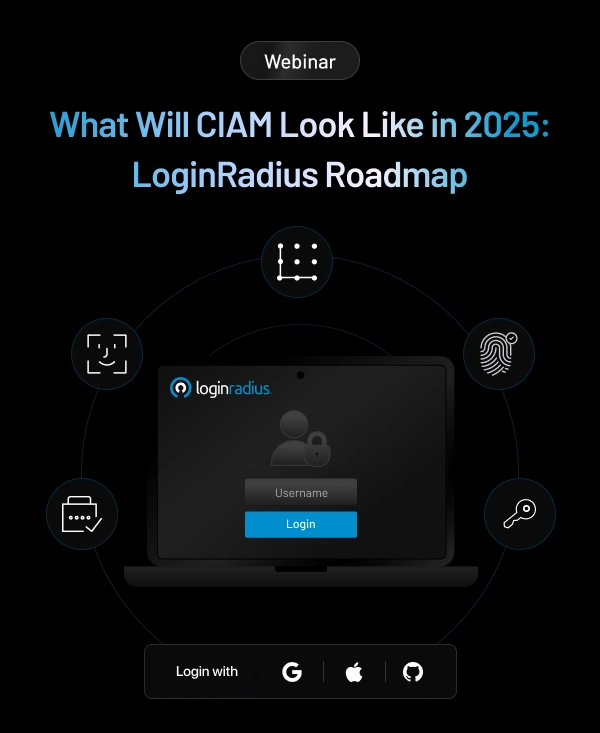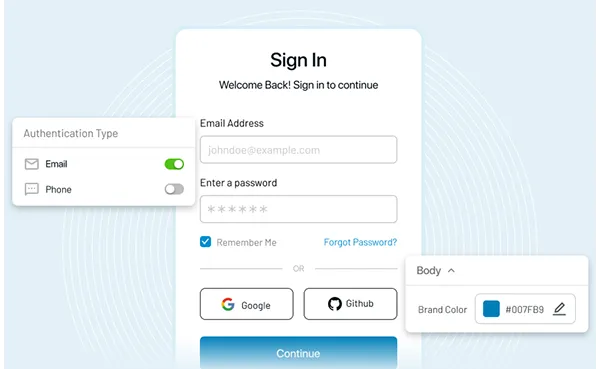Introduction
The significance of authentication in cybersecurity cannot be stressed enough. However, for decades, our understanding of user verification has remained unchanged. It always follows the same pattern: the user provides their passport, fingerprint, or ID, and if this input matches the system data, a session is initiated for the user.
However, with the emergence of continuous authentication for business, a seismic shift in the perspective of authentication has taken place. While earlier authentication was an event, now it is a process.
In the present day, organizations are prone to three types of attacks:
- Session imposters - Here, attackers try to take charge of sessions that run longer in comparison to the employee's usage time.
- Credential stuffing or password spraying, where attackers abuse the usage of duplicate passwords by obtaining credentials from other services or employing a list of common passwords.
- Phishing, where frequent password entries make employees neglect the origin of login requests.
Nevertheless, smarter and better authentication methods like continuous authentication can help in reducing the number of these attacks.
Continuous Authentication for Business Growth
Continuous authentication is a verification method that provides identity confirmation along with cybersecurity on a continuing basis. By constantly ensuring that the users are who they claim to be, continuous authentication authenticates the user not once but throughout the whole session. Continuous authentication for business is executed with machine learning, behavioral patterns, and biometrics and is designed to not interrupt the workflow.
With advancements in technology and the increasing rate of cybercrimes, continuous authentication for business is gaining popularity in modern times.
How Does Continuous Authentication for Business Work?
A continuous authentication system constantly analyzes user behavior and, depending on the data, grants the user access to the system. It computes an authentication score based on how certain it is that the user is the same as the account owner. According to the score, the user is asked to input more information like ID, fingerprint, and password.
Here's a list of the technologies used to implement continuous authentication:
- Physical Movement - To monitor a user's way of moving, sensors are used. That includes how a user walks while receiving a call on his phone and other specific positions and movements.
- Facial Recognition - Facial recognition is widely used for identification purposes like accessing a phone. In fact, you can also use it to authenticate users continuously.
- Behavioral biometrics - Here, you can continuously track a user's behavioral patterns like interactive gestures, typing style, finger pressure, how long a user holds a key on the keyboard, or how they swipe through the screen or hold the mouse. Variation from the normal behavioral patterns can then be marked.
- Voice Authentication - You can monitor pitch and frequency variations in voice for continuous authentication. Also, deviations from ordinary qualities can be identified by constantly tracking input speech against a reference control conversation.
Benefits and Drawbacks
The use of behavioral biometrics discourages and stops imposters, bots, and fraudsters from executing criminal activities. Continuous authentication helps in enhancing security without affecting the work experience of the user. Without this system, businesses will be more prone to attacks and cybersecurity threats. Other threats that continuous authentication can help prevent are credential stuffing and phishing.
The continuous authentication functionality can be integrated into an application. However, it's not yet possible to achieve this across multiple apps. Moreover, there is the issue of user acceptance, even though continuous authentication for business is a more viable idea in the present era of technology than in the past.
Many people might view continuous authentication as invasive to their privacy. Not everyone is comfortable with their actions being tracked and monitored. In the same way, issues of potential privacy and compliance can also come up. The key to the success of continuous authentication is achieving a balance between privacy concerns and security.
Conclusion
Continuous authentication has a tremendous impact on the growth of a business. Potential business partners want to ensure that an organization has proper security measures before they commit to it. Therefore, industry leaders are starting to realize that continuous authentication for business has a great significance in their cybersecurity system.
When executed the right way, it can massively enhance corporate security by decreasing the possibility of data breaches and sabotage. Also, continuous authentication improves the productivity of employees by helping them work seamlessly with better security.
After years of discussion and product development by security specialists, the concept of continuous authentication has emerged as a new wave in cybersecurity. And it is just the right time to embrace it!

















